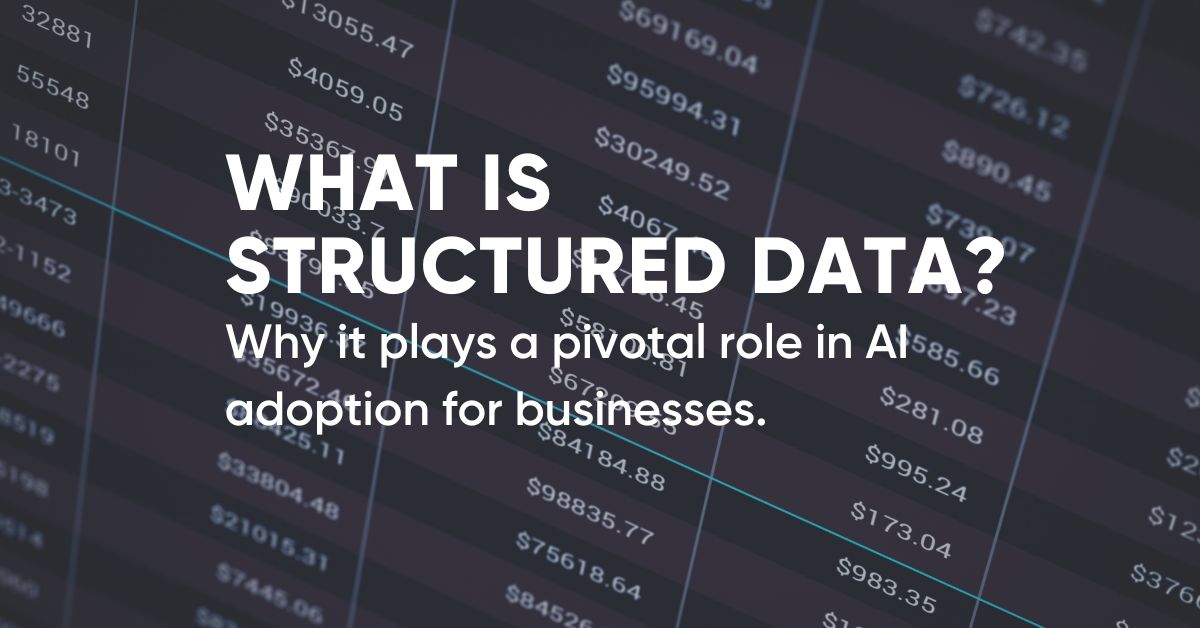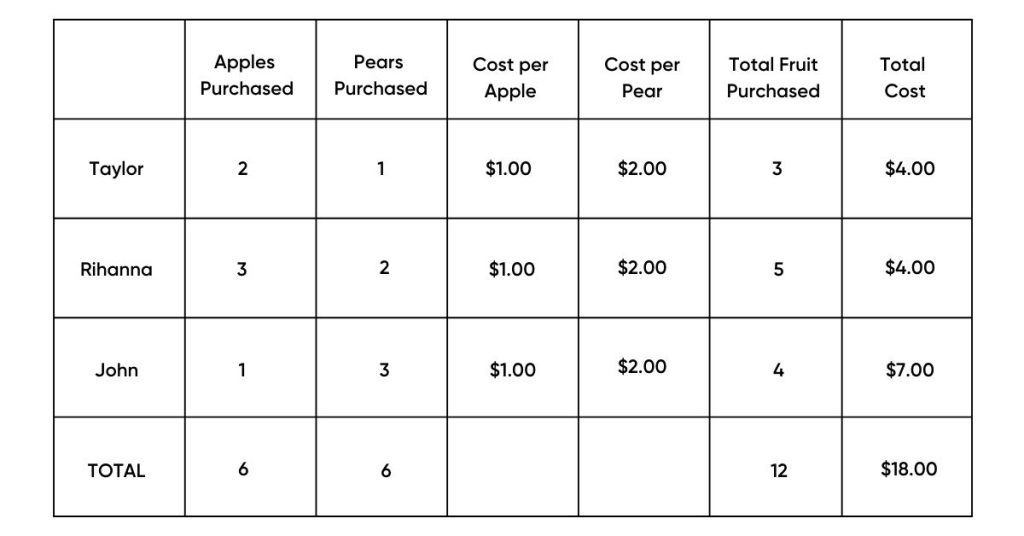Structured data refers to information organized in a predefined format, typically represented in tables or databases. Each data element is labeled with a specific field or attribute, facilitating easy categorization, storage, and retrieval. One of the more common ways to structure data today is via spreadsheets. Other examples of structured data include financial records, inventory databases, customer profiles, and transaction logs.
Among the various forms of data, structured data stands out for its organized format and clear delineation of relationships between data elements. Unlike unstructured or semi-structured data, which lack a rigid schema or predefined organization, structured data adheres to a standardized format, making it highly conducive to data analytics and training many machine learning models.
When data is properly structured, it is easier to maintain data hygiene. And anyone in the data game understands how challenging it can be to keep your data clean and usable. But with recent advancements in Generative AI, unstructured data also has an increasing role to play. Let’s delve into the concepts of structured data, its significance in the realm of artificial intelligence (AI), and where unstructured data can be utilized in the age of Generative AI.
Unstructured vs. Structured Data
Think of this like you are back in elementary school.
Unstructured:
Taylor, Rhianna, and John went to the store. Taylor bought two apples for $1.00 each, and one pear for $2.00. Rhianna bought 3 apples and two pears. John bought one apple and 3 pears. How many apples were purchased? How many pears were purchased? How much fruit was purchased? How much did it all cost?
Structured:
When performing an analysis to determine the total cost of purchased fruit in this scenario, starting from a traditional structured dataset with the help of Excel functions or SQL queries will make your life easier in providing an answer. Neither Excel functions or SQL can work directly with the unstructured natural language representation of the elementary school question.
In the past, the goal was to figure out how to set up data systems that ensure data is captured in an easily consumable fashion. In an enterprise setting, maybe that would involve automatically storing transactional data in an ERP system, and building up a business intelligence dashboard on top of that to calculate the total cost of purchased fruit each month or quarter. But with GenAI, you can utilize an LLM to convert that unstructured question into a structured format like JSON or a CSV, which then you can perform the automated analysis upon. The need for clean structured data isn’t going anywhere, but GenAI models are opening up new possibilities for working with unstructured data.
Importance of Structured Data in AI Adoption:
Structured data plays a pivotal role in AI adoption for businesses due to several compelling reasons:
- Ease of Processing: Many traditional AI algorithms thrive on structured data, as it enables efficient parsing, manipulation, and interpretation of information. By providing a clear framework for data analysis, structured data accelerates the training and deployment of AI models, leading to faster insights and decision-making.
- Accuracy and Consistency: Structured data inherently maintains consistency and accuracy, reducing the likelihood of errors or discrepancies in AI-driven processes. This reliability is crucial for businesses relying on AI to drive mission-critical functions such as forecasting, risk management, and customer relationship management.
- Enhanced Insights: The organized nature of structured data facilitates deeper insights into business operations, customer behavior, and market trends. AI algorithms can uncover meaningful patterns, correlations, and anomalies within structured datasets, empowering businesses to make data-driven strategic decisions with confidence.
- Interoperability and Integration: Structured data fosters interoperability and seamless integration with AI systems and other enterprise technologies. Whether it’s integrating data from disparate sources, interoperating with third-party applications, or connecting with AI platforms, structured data streamlines the exchange and utilization of information across the organization.
- Scalability and Agility: As businesses scale and evolve, structured data provides a scalable foundation for managing growing volumes of information. AI models trained on structured data can adapt to changing business requirements, market dynamics, and emerging trends, ensuring ongoing relevance and agility in decision-making processes.
Importance of Unstructured Data in AI Adoption:
While maintaining structured data is critical in AI adoption for businesses, unstructured data still has an important role to play:
Training General Use Models: Thanks to recent advancements in artificial intelligence like the transformer model, modern GenAI models can perform well even when trained upon unstructured data. The benefit of these models are that they have more general-use capabilities & can perform well even with many different input structures.
Incorporating New Types of Data: Many enterprises have significantly valuable information stored in unstructured formats, which was very difficult to utilize until recent GenAI models were released. Videos, images, charts, reports, and meeting notes all hold valuable information. Thanks to GenAI models, we can now automate summarizing & extracting information in useful ways, inclusive of using GenAI models to translate unstructured data into more structured formats that can be utilized for traditional analytics.
Context is king. In the era of AI-driven innovation, utilizing both structured & unstructured data is critical for businesses to build scalable, agile, and insights-driven operations. Unstructured data can help businesses better understand existing nuances and add a deeper understanding of data. By embracing structured data, leveraging its inherent advantages, and using those insights in combination with the context and meaning of unstructured data, businesses can unlock new opportunities for growth, efficiency, and competitive differentiation in an increasingly data-driven world. As businesses embark on their AI adoption journey, prioritizing structured data is not just a best practice—it’s a strategic imperative for success in the digital age.


